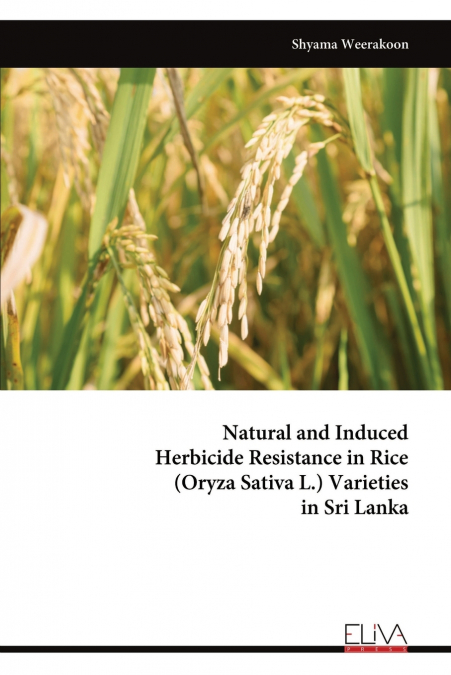
 Librería Desdémona
Librería Desdémona
 Librería Samer Atenea
Librería Samer Atenea
 Librería Aciertas (Toledo)
Librería Aciertas (Toledo)
 Kálamo Books
Kálamo Books
 Librería Perelló (Valencia)
Librería Perelló (Valencia)
 Librería Elías (Asturias)
Librería Elías (Asturias)
 Donde los libros
Donde los libros
 Librería Kolima (Madrid)
Librería Kolima (Madrid)
 Librería Proteo (Málaga)
Librería Proteo (Málaga)
Weeds along with insect pests and plant diseases are sources of biotic stress in crop systems. Weeds are responsible for serious problems in rice worldwide affecting growth and causing a considerable reduction in quality and quantity in yield. Herbicide-resistant rice varieties in combination with pre-emergent-broad-spectrum herbicides and post-emergent broad-spectrum herbicides improve the effectiveness of weed management in rice fields. Herbicide resistance can be acquired naturally or induced by classical or modern breeding techniques.High concentration of Glyphosate, a pre-emergent-broad-spectrum systemic herbicide, is prevalently applied to control rice weeds in Sri Lanka, which intern causes severe damages to cultivated rice varieties which are susceptible to Glyphosate. However, there are rice varieties with natural Herbicide Resistance (HR). Six traditional and eighteen inbred, cultivated rice varieties (Bg, Bw, At and Ld series developed by Rice Research Development Institute, Sri Lanka) were used to screen their natural HR. As observations, time taken-to seed germination, time taking to flowering; plant height and number of leaves at 12-weeks after sawing, leaf-length, breadth, panicle-length, number of seeds/panicles of resistant plants and controls were recorded. Plants with ≥ 40% resistance were considered as resistant to Glyphosate. Ten inbred rice varieties (Bg250, Bg94-1, Bg304, Bg359, Bg406, Bg379-2, Bg366, Bg300, Bw364, At362) and three traditional rice varieties ('Kalu Heenati', 'Sudu Heenati', 'Pachchaperumal') were naturally resistant to 0.25 g L-1 Glyphosate concentration and when increased the concentration (0.5 gL-1) resistance were reduced.The post-emergent broad-spectrum herbicide, Glufosinate is also applied to control rice weeds in Sri Lanka. Two traditional varieties ('Pachchaperumal', 'Ma Wee') and fifteen inbred varieties (At362, Bg250, Bg300, Bg352, Bg357, Bg358, Bg359, Bg360, Bg366, Bg369, Bg379/2, Bg403, Bg450, Bg454, and Bg94-1) were screened for their natural HR resistant to Glufosinate.